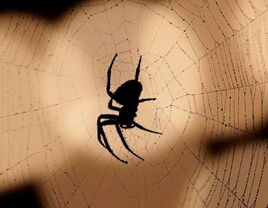为什么你会怕蛇,怕蜘蛛
|
If the thought of a snake slithering around your feet or a spider walking up your arm sends shivers down your spine, despite never having come into contact with one in real life, then it could be your genes that are to blame. Over the last few decades there has been much debate between scientists about whether these phobias are innate or are learned during childhood. But a new study has discovered that it is in fact hereditary, as babies at only six months old (long before they have had a chance to learn about the dangers of spiders and snakes) show signs of stress when they see these creatures.
It is estimated that the UK alone there are over 10 million people living with phobias, and ophidiophobia (fear of snakes) and arachnophobia (fear of spiders) always top the list of the most common concerns, according to a YouGov survey. Now a team at the Max Planck Institute for Human Cognitive and Brain Sciences in Sweden have concluded that it isn’t because we are taught to fear them after birth. In the trial, they showed a group of babies images of spiders and snakes alongside flowers and fish - all the same size and in the same colour. When the child’s gaze rested upon the snake or spider, rather than the other animals, their pupils enlarged significantly - a classic physiological signpost that a human is experiencing internal stress. Stefanie Hoehl, lead investigator, said: “In constant light conditions this change in size of the pupils is an important signal for the activation of the noradrenergic system in the brain, which is responsible for stress reactions. Accordingly, even the youngest babies seem to be stressed by these groups of animals.” And it would be hard to argue that as a relative newborn, who is immobile, that they had had a chance to learn to be scared of spiders or snakes. Instead they argue that this is an evolutionary development, and similar to primates, mechanisms in the human brain have had to develop to react very quickly to these potentially dangerous threats. |









